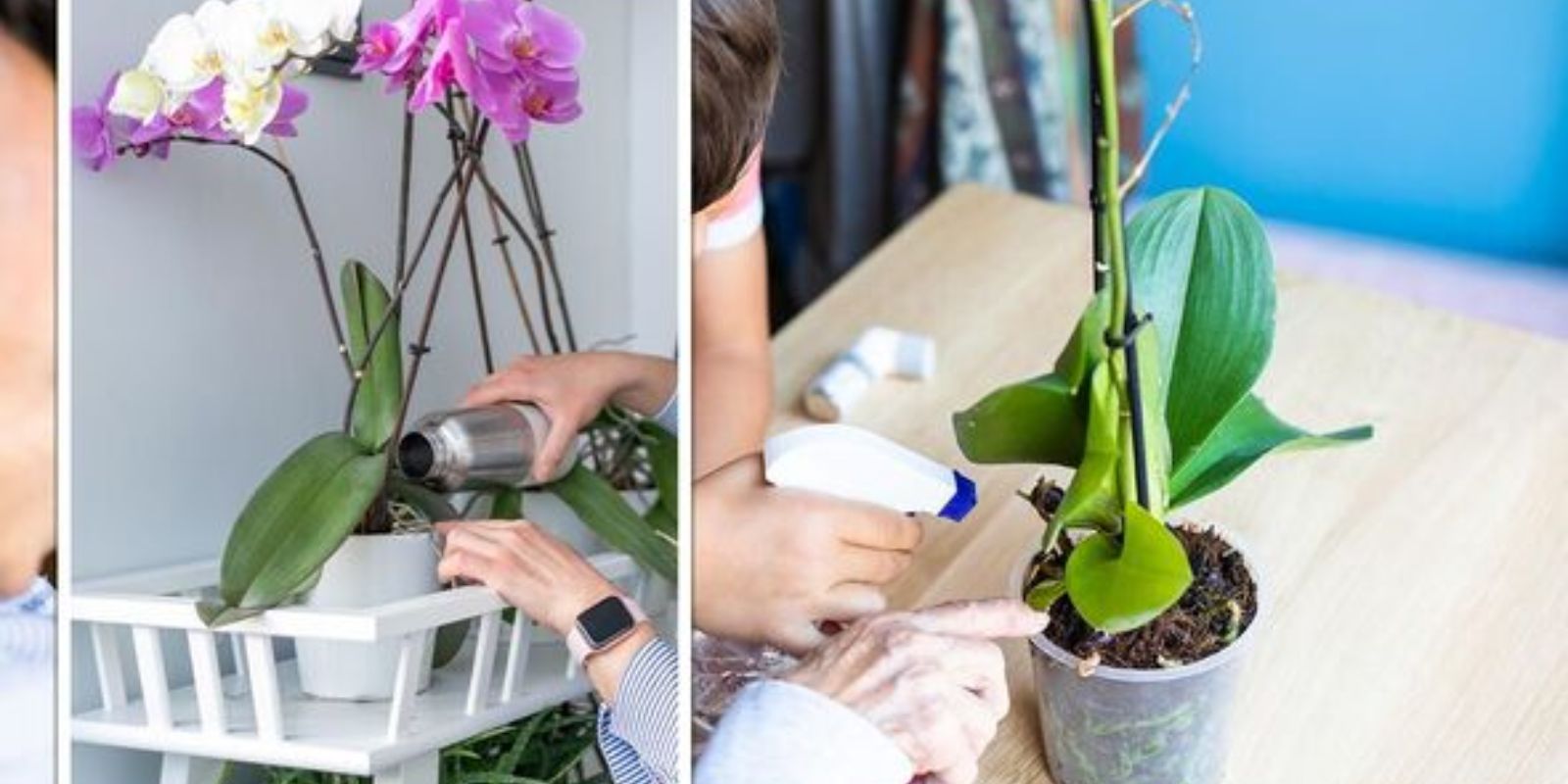Introduction
Orchids are celebrated for their exotic beauty and delicate blooms, making them a prized addition to any home or garden. However, their elegance comes with a set of care requirements that can be challenging to meet. Many orchid enthusiasts, whether novice or experienced, can unintentionally make mistakes that affect their plants’ health and blooming potential. Understanding and correcting these common errors is essential to keeping orchids vibrant and thriving.
In this article, we’ll explore seven common mistakes in orchid care, offering practical solutions to help you avoid these pitfalls. By addressing these issues, you can ensure your orchids receive the optimal care they need to flourish and continue to delight with their stunning blooms.
1. Overwatering: The Most Common Mistake
Overwatering is perhaps the most frequent error made by orchid caretakers. Orchids are susceptible to root rot, a condition often caused by consistently wet roots. Here’s how to avoid this mistake:
- Recognize the Signs: Yellowing leaves and a musty smell are indicators of overwatering. Ensure the potting mix is dry before adding more water.
- Watering Frequency: Water your orchid only when the top inch of the potting mix feels dry. Typically, this means watering once a week, but it can vary depending on the orchid type and environmental conditions.
- Proper Drainage: Use pots with drainage holes and a well-draining orchid mix to prevent water from sitting at the bottom of the pot.
2. Incorrect Light Levels: Striking the Right Balance
Orchids need specific light conditions to thrive. Too much direct sunlight can scorch their leaves, while too little light can stunt growth and flowering. Here’s how to get it right:
- Understand Light Needs: Most orchids prefer bright, indirect light. Place them near a window with filtered light or use sheer curtains to diffuse the sunlight.
- Monitor Light Exposure: If you notice dark green leaves, your orchid may need more light. Conversely, if the leaves turn yellow or develop sunburn spots, reduce exposure to direct sunlight.
- Use Grow Lights: If natural light is insufficient, consider using grow lights designed for orchids to provide the necessary light conditions.
3. Poor Drainage: Avoiding Root Rot
Proper drainage is crucial for orchid health. Without it, excess water can lead to root rot and other issues. Here’s how to ensure good drainage:
- Choose the Right Potting Mix: Use a specialized orchid potting mix that includes materials like bark, perlite, and sphagnum moss to ensure good aeration and drainage.
- Pot with Drainage Holes: Ensure your orchid pot has sufficient drainage holes. This allows excess water to escape and prevents waterlogging.
- Repotting: Repot your orchid every 1-2 years to refresh the potting mix and inspect the roots for any signs of rot.
4. Inconsistent Temperature: Maintaining Stability
Orchids are sensitive to temperature fluctuations, which can impact their growth and blooming. Here’s how to maintain a stable environment:
- Ideal Temperature Range: Most orchids thrive in temperatures between 65-75°F (18-24°C) during the day and slightly cooler temperatures at night. Check the specific needs of your orchid type.
- Avoid Extreme Conditions: Keep orchids away from drafts, heating vents, and air conditioners. Sudden temperature changes can stress the plant.
- Use a Thermometer: Place a thermometer near your orchids to monitor temperature conditions and make adjustments as needed.
5. Neglecting Humidity: Keeping the Air Moist
Orchids require higher humidity levels than typical indoor environments provide. Low humidity can lead to dry, unhealthy plants. Here’s how to manage humidity:
- Maintain Humidity Levels: Aim for humidity levels between 40-60%. Use a humidity tray or a room humidifier to increase moisture in the air.
- Group Plants Together: Placing orchids close to other plants can help increase local humidity levels through evaporation.
- Monitor Humidity: Use a hygrometer to measure humidity levels and adjust your humidity sources accordingly.
6. Improper Fertilization: Balancing Nutrients
Orchids need regular feeding to support their growth and blooming. However, improper fertilization can lead to nutrient imbalances or damage. Here’s how to fertilize correctly:
- Use Orchid-Specific Fertilizer: Choose a balanced orchid fertilizer, such as a 30-10-10 formula, and follow the recommended dosage on the label.
- Fertilization Schedule: Fertilize orchids once a month during the growing season (spring and summer) and reduce feeding during the rest period (fall and winter).
- Avoid Over-Fertilization: Excessive fertilizer can harm orchids. If you notice leaf burn or other symptoms, reduce the amount of fertilizer and increase the watering frequency to flush out excess nutrients.
7. Ignoring Pests: Preventing and Managing Infestations
Pests can pose a significant threat to orchid health, leading to various problems including leaf damage and reduced blooming. Here’s how to manage pests effectively:
- Regular Inspections: Check your orchids regularly for signs of pests such as mealybugs, scale insects, and aphids. Look for small, discolored spots or sticky residues on the leaves.
- Treatment Options: Use insecticidal soap, neem oil, or other suitable treatments to manage pest infestations. Always follow the manufacturer’s instructions for application.
- Preventive Measures: Maintain good hygiene and avoid overcrowding plants to reduce the risk of pest problems. Keep your orchids in a clean environment and remove any affected plant parts promptly.
Conclusion
Understanding and correcting common orchid care mistakes is essential for maintaining the health and beauty of these remarkable plants. By avoiding overwatering, providing the right light and temperature, ensuring proper drainage and humidity, and managing pests effectively, you can create an optimal environment for your orchids to thrive.
Start implementing these tips today to enhance your orchid care routine and enjoy the satisfaction of nurturing these stunning plants to their full potential. With attention to detail and proper care, your orchids will reward you with vibrant, beautiful blooms that brighten your home and garden.

